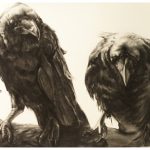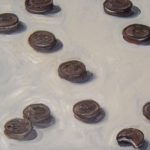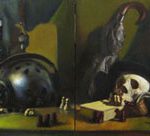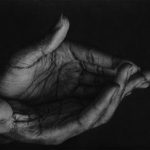Facebook, Curator of Culture
It’s not “Contemporary vs. Traditional†or “Disegno vs. Colore.†It’s much more universal and it drives to the heart of the age-old dialogue in visual culture: What is Art?
Just today, facebook alerted me that an image which violates their Terms of Use was removed from the New York Academy of Art’s facebook page. This image – a drawing by Steven Assael (see below) – is in an exhibition curated by the Academy and shown at the Eden Rock Gallery in St. Barth’s.
And this isn’t the first time… Alyssa Monks (MFA 2001) was censored by facebook, too. (Also read Huffington Post’s comments.) How does the de-facebooking of other works of fine art connect to the recent decision by the Smithsonian to remove David Wojnarowicz’s artwork from the National Portrait Gallery’s online and on-site exhibition?
As an institution of higher learning with a long tradition of upholding the art world’s “traditional values and skills,†we, the Graduate School of Figurative Art, find it difficult to allow facebook to be the final arbiter – and online curator – of the artwork we share with the world.
 |
| Steven Assael, “Simone” ink on paper. Artwork image removed by facebook from the Academy’s display of an exhibition on facebook. |
If it begins with Steven Assael, a modern master, who’s next? Is it Kurt Kauper? (His drawing is still on facebook.) And then… must we censor artworks by our own MFA graduates? In this online kingdom in which facebook seems to rule, allegedly as a tool of universal communication and equal opportunity advancement, how shall the New York Academy of Art continue to impartially promote its under-recognized artists?
If facebook is a new online Salon de Paris, where a faceless group of “curators†determine what artwork the public should see, well then please consider our website the Salon des Refusés!
And so we now ask: How is FACEBOOK controlling ART?
Elizabeth Sackler Lecture
Elizabeth A. Sackler is an arts activist and a public historian who lectures and writes on ethics and morality in the art market and beyond. The idea of a place, a center, bound to equality without artificial constraints led her to found the Elizabeth A. Sackler Center for Feminist Art at the Brooklyn Museum, home of “The Dinner Party†by Judy Chicago which honors women’s contributions in all fields throughout history. Her lecture will be about: “Moving Right Along: The Radicalization of Normal People” and we look forward to the Q&A portion of her lecture!
All lectures are free and open to the public.
Stay tuned to the blog for upcoming lectures including Donald Kuspit, Jeanne Silverthorne and Phoebe Hoban.
Click here for a complete schedule of SPRING 2011 Lectures
The NYAA Library has these resources available exclusively for NYAA students.
- Chicago, Judy, and Lucie-Smith, Edward. Women in Art: Contested Territory. Watson-Guptill: New York. 1999.
- The Dinner Party: From Creation to Preservation. Merrell: London. 2007.
- Lucie-Smith, Edward. Judy Chicago: An American Vision. Watson-Guptill: New York. 2000.Â
- Electronic access to Academic OneFile (links only accessible in the NYAA campus):
- “Dinner party finds new home in Brooklyn.” Art Business News 29.13 (2002): 54. Academic OneFile. Web. 8 Feb. 2011.
- Feitelberg, Rosemary. “New Breed of Feminism Brooklyn Bound.” WWD (2007): 26. Academic OneFile. Web. 8 Feb. 2011.Â
- Schjeldahl, Peter. “Women’s Work.” The New Yorker 9 Apr. 2007: 73. Academic OneFile. Web. 8 Feb. 2011.
- Stevens, Mark. “The history of herstory: the Brooklyn Museum’s new feminist-art center shows us that sisterhood can be both powerful and cliched.” New York 2 Apr. 2007: 78+. Academic OneFile. Web. 8 Feb. 2011.
- 384 images in ArtStor, collected in the Elizabeth Sackler/Judy Chicago > image group Judy Chicago.
Five Ways to Create Space in your Painting
The New York Academy of Art is pleased to share a new note by Hilary Harkness. Regularly posting her “Notes from Studio Lockdown,” Hilary blogs with us as she prepares for her upcoming exhibition in May at Mary Boone Gallery in New York City. Follow her on this blog for sneak peeks into her studio practice!
Dear friends,
Recently I was asked for some tips on creating the illusion of space in a painting. I like this question, because as mysterious as the painting process may seem to be, most of what I do as an artist is very basic. Even as I am finishing a painting, my process is still all about the fundamentals. Here are five simple ways to create space in your painting – but please do chime in if there are more you can think of.
1. Overlapping
We all know this one – paint a person in front of a tree and the tree recedes. But here, Degas gets extra-tricky by slightly blurring, fading, or obscuring some of the background objects the moment before they dip behind the central figure.
 |
| Degas |
2. Dark vs. Light
Notice how in this painting by Josef Albers the black square seems to automatically recede. The lighter colors pop forward, and as I see it the constructed space flickers inwards and outwards. I challenge you to see this space as flat!
 |
| Albers |
3. Atmospheric Perspective
It is easy to find Renaissance paintings that have colors that fade out to blue in the distance, however, you can use any color yourself for this purpose if you lower the contrast as you push objects further back into space. Here’s a favorite of mine by Gerard David.
 |
| Gerard David |
4. Focus
Photographers use it, painters use it, and I sure wish more sculptors would use it! Here we have Vermeer’s Lacemaker – note how the objects on the front table seem miles closer to us than the girl’s head. When I look at this painting, I feel like I am microscopically tiny, looking toward a distant mountain that happens to be a girl.
 |
| Vermeer |
5. One and Two-point Perspective
All I can say is hit the books. Here is a website on this subject that is fascinating and T.M.I.
 |
| Canaletto |
An advanced perspectival technique is to determine how far the viewer’s eye is from your painting, and to then calculate how quickly things recede into space. Here’s a subtle case in which the artist William Bailey uses a very quick speed of spacial recession to make the viewer feel pushed far away from the picture plane. Our eyes are tricked into thinking these objects are on a narrow shelf, but we also know that each of these overlapping jars must be several inches in diameter. If our ‘eye’ was close to this still-life, the top lines and the bottom lines of the vases would not both be so straight and parallel to each other. This is indeed a painting of a still life as viewed from across a room, and that is why the space seems so shallow and flattened in some ways.
 |
| Bailey |
Yours very truly,
Hilary Harkness
January preVIEW
Each month, Librarian & Archivist Holly Frisbee highlights articles, reviews, and interviews from the current issues of our periodical collection. Take a moment to check them out and let us know what you think!
 |
| Bo Bartlett |
- Anderson, Kristen. “Zero Hour: The Art of Jean-Pierre Roy.†Hi-Fructose. Jan 2011. 31-41. An interview with academy faculty Jean-Pierre Roy. Lots of pictures.
- Gormley, Michael. “Bo Bartlett and the American Dream.†American Artist. Mar/April 2011. 33-39. A look at Bo Bartlett’s most recent work.
- Gregg, Gail. “Nothing like the Real Thing.†ArtNews. Dec 2011. 68-71. After decades out of fashion, the practice of drawing from life models is growing in popularity.

Jim Nutt - Hull, Richard. “Gladys Nilsson/ Jim Nutt.†Bomb. Winter 2010. 50-59. Painter Richard Hull interviews the legendary couple at their home. They talk shop about the Hairy Who and Chicago Imagism, Bruegel, and El Greco.
- Jenney, Neil, Kelley, Mike, et. al. “Six Views of Paul Thek.†Artforum. Artforum invited six distinguished artists and writers to ruminate on Thek’s life and work. Paul Thek’s first retrospective, Diver, is currently on view at the Whitney.
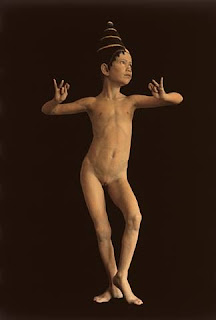
Judy Fox - Landi, Ann. “A Case of Caravaggiomania.†ARTNews. Jan 2011. 101-105. The bad boy of Baroque is back in style with scholars, museumgoers, filmmakers, and even video artists.
- Morgan, Eleanor. “John Baldessari.†Believer. Dec 2010. 45-52. Things John Baldessari avoids at all costs: Repeating himself; Making art that’s a parody of his previous work; Throwing things in the trash.
- Shull, Jodie A. “The World of Judy Fox: Power in Paradox.†Sculpture Review. Fall 2010. 12-15. A profile of Academy faculty member Judy Fox.
(i’ve got a secret)
“i’ve got a secret” represents the mysterious and hidden, subtly tucked away thoughts
that our artists always wanted to share… but haven’t.
Â
Tuesday – Saturday, 10am-4pm, Free and open to the public through the duration of the exhibition.212.206.5548
For a complete list of artists and to view the exhibition on line, please visit:Â
http://www.nyaa.edu/exhibitions
I’ve Got a Secret

- Eugene Abrams
- Emily Adams
- Melissa Anderson
- Antonia Andrioti
- Michael Antkowiak
- Michael Antkowiak
- Jessie Brugger
- Doris Buehler
- Hedward Brooks
- Dina Brodsky
- Seulki Lee
- Claudia Butz
- Kathryn Swenson
- Yi Cao
- Conrad Cooper
- Cessna Decosimo
- Demetro Belenky
- Alphonso Dunn
- Daniel Esquivia Zapata
- Alexandra Evans
- Samuel Evensen
- Steve Forster
- Mikel Glass
- Debra Goerz
- Angela Gram
- Sarah Hall
- Alieve de Souza Howell
- John Jacobsmeyer
- Minsin Kim
- Meredith Lachin
- Geoffrey Laurence
- Lisa Lebofsky
- Shanga Manning
- Joseph Materkowski
- Ayumi Matsuba
- Eric Mavko
- Margaret McCann
- J. Adam McGalliard
- Alyssa Monks
- Gary Murphy
- Francis Nguyen
- Margaret Owen
- Felice Panagrosso
- Isaac Pelepko
- Yupin Pramotepipop
- Alan Quiros
- Matthew Robinson
- Maggie Rose
- Jean-Pierre Roy (Faculty)
- Hilary Schmidt
- Truitt Seitz
- Amber Sena
- Stephen Shaheen
- Robert Simon
- Imogen Slater
- Michael Smith
- Kathy Stecko
- Greg Tomezsko
- Migel Torres Carlos
- Joseph Ventura
- Patrizia Vignola
- Mitra Walter
- Mitra Walter
- Mitra Walter
- Annie Wildey
- Stephen Winiecki
- Shawn Yu
- Zack Sy Kim
Open House! Saturday, January 15, 2011
January 15, 2011
March 5th, 2011
March 19th, 2011
**Attendees will have their application fee reduced from $80 to $60!
This will be our most well-attended Open House yet, so please make sure to click here to register.
It’s not too late to stART…
Continuing Education starts January 24. Space is limited – REGISTER NOW for classes in drawing, painting and sculpture along with special workshops. Start the year with Art- all levels welcome! Visit our website for more information.
 |
| Landscape Painting |
SATURDAY
Anatomy for Artists
Sculpting the Figure
Drawing & Painting: Theory & Practice
Absolute Beginners Drawing & Painting
Intermediate Drawing & Painting
Landscape Painting
Still Life Painting
 |
| Thinking in Color |
SUNDAY
Thinking in Color
 |
| Portrait Sculpture |
MONDAY
Painting Studio
Landscape Painting
Academic Figure Drawing and Painting
Portrait Sculpture
 |
| Drawing & Painting Studio |
TUESDAY
Drawing & Painting Studio
Absolute Beginners Drawing & Painting
Intermediate Drawing & Painting
Ecorche of the Head
 |
| Still Life Painting |
WEDNESDAY
Drawing & Painting Studio
Figure Drawing 101
Painting the Figure
Sculpting the Figure
Still Life Painting
 |
| Beginning Watercolors |
THURSDAY
Painting the Figure
Beginning Watercolors
Bargue Method (Drawing)
 |
| Bargue Method (Drawing) |
FRIDAY
Friday Atelier
Absolute Beginners Drawing & Painting
Painting the Figure
WORKSHOPS
Alyssa Monks: Painting the Flesh – January 3-7 (FULL)
Panni Malekzadeh: Painting the Clothed Figure – January 18-21
James Hoston: Long Pose – January 10-14
Please contact John Cichowski at 212 966 0300 x968 or johnc@nyaa.edu to reserve
your spot now!
Land Use Interpretation
By Emily Adams (MFA 2011)
 |
| A “sbloomberg” on Franklin Ave, Brooklyn |
The snow plow outside my apartment was stuck for two days. On the second day, a group of guys decided to build a “sbloomberg,” a Bloomberg snowman, in front of the giant, frozen metal blade. As the uncollected trash formed adjacent mountains to the snow piles people dug around the sidewalk corners, kids went whizzing down Franklin Avenue on hot magenta plastic toboggans and groups of store owners and families gathered in groups to laugh and grumble at the various activities put on hold by mother nature. The landscape of Crown Heights, Brooklyn, was drastically changed by this year’s Snowmageddon, and with it the entire culture of the neighborhood, if just for a day.
 |
| (my painting) Landscape Letter, oil, ink-jet on canvas, 2010 |
 |
| A view from the Kiefer show at Gagosian Gallery, Chelsea |





















